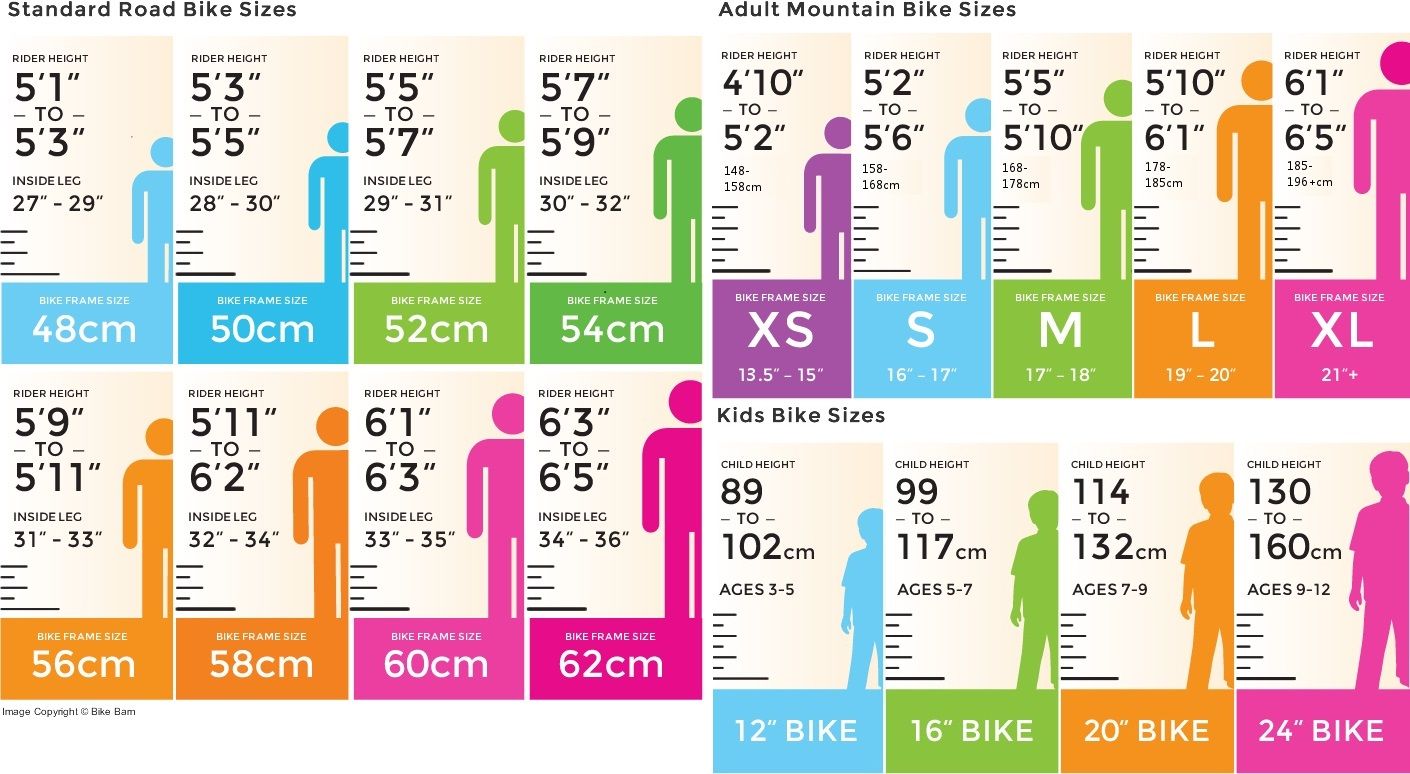One of the most important aspects to consider when buying a bike is the size of the frame. Choosing the right bike size is crucial to both performance and comfort.
A bike that is too small will cramp your peddaling technique, make riding difficult and cause your energy expenditure while cycling to be less than efficient. A bike that is too big will handle poorly and be dangerous ride and to mount/dismount.
Before heading to the local cycle shop to buy a bike you should arm yourself with a few crucial bike size measurements. These measurements will help you make sense of bike-sizing charts and enable you to buy a bike that is the correct size for you.

Inseam
First off, measure your inseam. Also known as your inner leg measurement, this should be done in bare feet. You’ll need a hardcover book, a pencil and a tape measure.
Standing upright, place the book between your legs so that its spine is uppermost and pressed snugly into your crotch. Position yourself so that the part of the book extending in front of you touches a wall. Use your pencil to mark the wall along the top of the book. Now use a tape measure to measure from this mark to the floor. The measurement you get is your inseam measurement.
Your inseam measurement will determine the height of the bike you buy. For a road bike you need to be able to stand flat-footed over your bike and have between 2.5cm and 5cm clearance between your crotch and the top tube (crossbar) of the bike.
Stand-over Height
The height of a bike is often referred to in terms of its “stand-over” height. This is the distance from the ground to the upper surface of the top tube. Making sure your inseam measurement is between 2.5cm and 5cm greater than a bike’s stand-over height is a great start to choosing the right size bike.
Torso and Arms
Torso and arm measurements are important when choosing the right bike size as they will help you select a bike that is the right length for you.
To measure your torso, place a book between your legs again and measure from the top of its spine to the beginning of the “V” in your neck i.e. the top of your breastbone. Hold the tape measure vertical when you take this measurement, don’t lie it flat against your chest.
To measure your arms for bike sizing, make a fist, hold your arm out to your side so that your thumb faces the ceiling and your arm is parallel to the floor. Measure from the end of your collarbone to the middle of your fist.
Top Tube Length
The length of a bike is determined by its “top tube length”. A bike’s top tube length is the horizontal distance between the head tube (where the handle bar strut sits) and the seat tube.
As a rule of thumb you can find the correct top tube length for a road bike by adding your torso and arm measurements together, dividing the result by 2 and then subtracting 15cm (or 6 inches).
Comfort and Performance
The two golden rules for determining the right bike size are comfort and performance.
You want a bike that is comfortable to ride, otherwise it’s going to spend most of its life stuck in a corner of the garage. Once you’ve got to comfort side of things covered, you want a cycle that will perform efficiently. If a bike takes more effort than necessary to get up a hill or is slower than your mates’ bikes you’ll very quickly become disenchanted with the sport.
In conclusion, going to your local bike shop and physically sitting on the bicycle you want is going to give you the best idea of what size bike you need. Remember the importance of a correct fitting bike so you can be comfortable, injury free, and fast! The charts below can be used as a guide to help get an idea of the correct size you may need.














